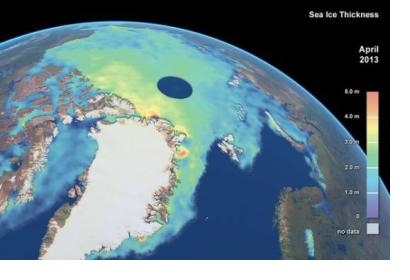Researchers at London’s Global University (UCL) and the University of Leeds discovered that the volume of Arctic ice increased 33% between 2013 and 2014 due to an unusually cool summer in 2013. The study, published in Nature Geoscience and funded by the Natural Environment Research Council (NERC), was carried out by using 88 million measurements of sea ice thickness recorded by the European Space Agency’s (ESA) CryoSat-2 mission between 2010 and 2014.
Between 2010 and 2012 the satellite results indicated a 14% reduction in the summertime Arctic ice volume but it was 41% higher in the summer of 2013 than in the previous year. This suggests that Arctic sea ice may be more resilient than previously thought and is more sensitive to changes in summer melting than to winter cooling.
CryoSat-2 is an environmental satellite launched by ESA in 2010. It provides scientists with data about the polar ice caps and tracks changes in the thickness of the ice with a resolution of about 1.3 centimetres. This group of scientists plan to employ CryoSat-2 data to enhance models used for clime change forecasts and assist maritime activities in the Arctic region.
According to Rachel Tilling, lead author of the research, “until CryoSat-2 was launched, it was tricky to measure the volume of Arctic sea ice as the pack drifts and measurements could not be taken across the whole region. Together with maps of sea ice extent, our measurements of sea ice thickness now complete the picture because they reveal what’s going on below the water, where most of the action happens.” However, the 5-year record is still too short to predict long term trends.

